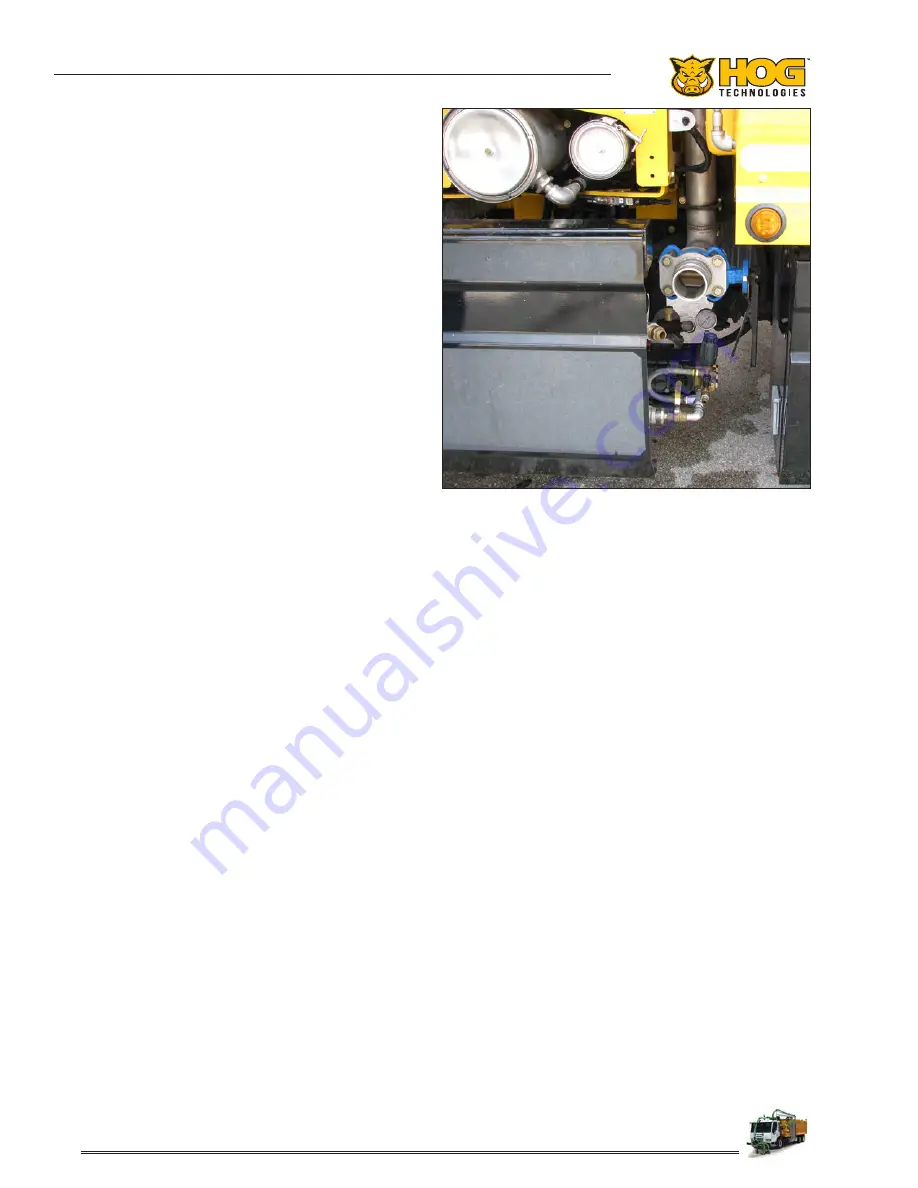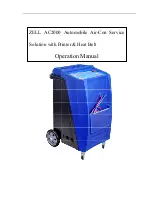
74
Section 3 - Operation
3.2 Pre-Operation Inspection
The pre-operation Inspection in this section and
the Pre-Op Check List in Appendix 4 is provided
as a guideline. Additional items should be added
to the checklist as determined by company policy,
your operating environment, and other factors
unique to your situation.
The following instructions provide a general over-
view and introduction to the pre-operation inspec-
tion. The Pre-Op Checklist provides an itemized
checklist that should be used when performing a
pre-operation inspection.
Pre-start Inspection Check List:
1. Check tire condition and air pressure.
2.
Inspect all hoses for chaffing and signs of wear.
3. Check fuel levels and make sure you have
enough for the shift.
4.
Check engine and all systems fluid levels.
Refer to the truck and OMSI Drive operating
manuals.
5. Check all waterblasting and vacuum compo-
nents for oil leaks, damaged or loose bolts
and parts.
6. Inspect the Hog Head for loose components
and damage.
7. Check vacuum canister for water and the
vacuum filter. Drain water or clean filter as
required.
8. Check the vacuum blower and UHP pump drive
belt tension and alignment.
9.
Check clean water tank level and fill if neces
-
sary.
10. Check that the wastewater bladder is empty. Drain
if necessary.
11. Drain debris tank water and check debris level.
Empty if necessary.
12. Make sure debris tank door is closed properly and
the inflatable seal pressure is correct.
13. Make sure the correct spray bar and nozzles re-
quired for the removal project are installed.
14. Visually inspect spray bars and nozzles for damage
and excessive wear.
15. Make sure all lubrication points, vacuum blower
motor bearings and Hog Head thru-shaft bearings
are greased with the specified lubricants.
16. Check all controls, switches and lights for proper
operation.
17. Make sure the Mobile Spare Parts and Tool Sys-
tems are complete and onboard.
18.
Conduct a final walk around and visually check all
components. Look for obvious problems that may
have been overlooked.
3.3 Filling The Clean Water Tank
The clean water fill connection on the passenger
side of the tank is a quick connect fitting that ac
-
commodates large hoses that are typically con-
nected to a metered source like a fire hydrant to
expedite the filling of the tank. Only use potable
water (clean enough to drink) to increase the
service life of the components in your Ultra-High
Pressure system.
Filling the freshwater tank:
1. Open the man-way on the top of the rear fresh
water tank and make sure the wastewater blad-
der is empty, then close and latch the man-way.
Clean Water Fill Fitting & Valve
Summary of Contents for STRIPE SH7500
Page 1: ...75 H Operations Manual...
Page 2: ......
Page 72: ...72 NOTES...
Page 108: ...108 NOTES...
Page 161: ...161 Section 5 Scheduled Maintenance...
Page 167: ...167 Appendix 2 Tools Spare Parts...
Page 168: ...168 Appendix 2 Tools Spare Parts...
Page 169: ...169 Appendix 3 Daily Report Pre Op Checklist 1 877 HOG ROAD WWW STRIPEHOGSUPPORT COM 60...
Page 178: ...178 NOTES...
Page 185: ......
Page 186: ......
















































